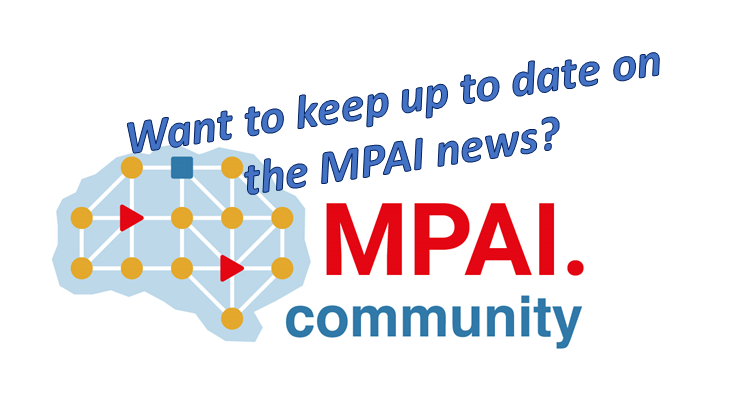Moving Picture, Audio and Data Coding by Artificial Intelligence (MPAI) is an international non-profit organisation with the mission to promote the efficient use of Data by

- Developing Technical Specifications of
- Moving Picture, Audio and Data Coding and Decoding, especially using new technologies such as Artificial Intelligence, and
- Technologies that facilitate integration of Coding components in ICT systems, and
- Bridging the gap between Technical Specifications and their practical use through the development of IPR Guidelines, such as Framework Licences and other instruments.
- Patent holders are rewarded for their innovations brought into the standard and
- Users easily know how much, to whom and how to pay for using the standard.
- Make available a licence of their essential patents drafted according to the FWL not after after commercial implementations of the TS become available on the market
- Enter into a licensing agreement of other members’ essential patents, if used, within 1 year after the licences have been made available by other IPR holders
- Is specific of a standard
- Simplifies creation of patent pool(s)
- Extends MPEG’s process
- Fights the trend to debase IP


